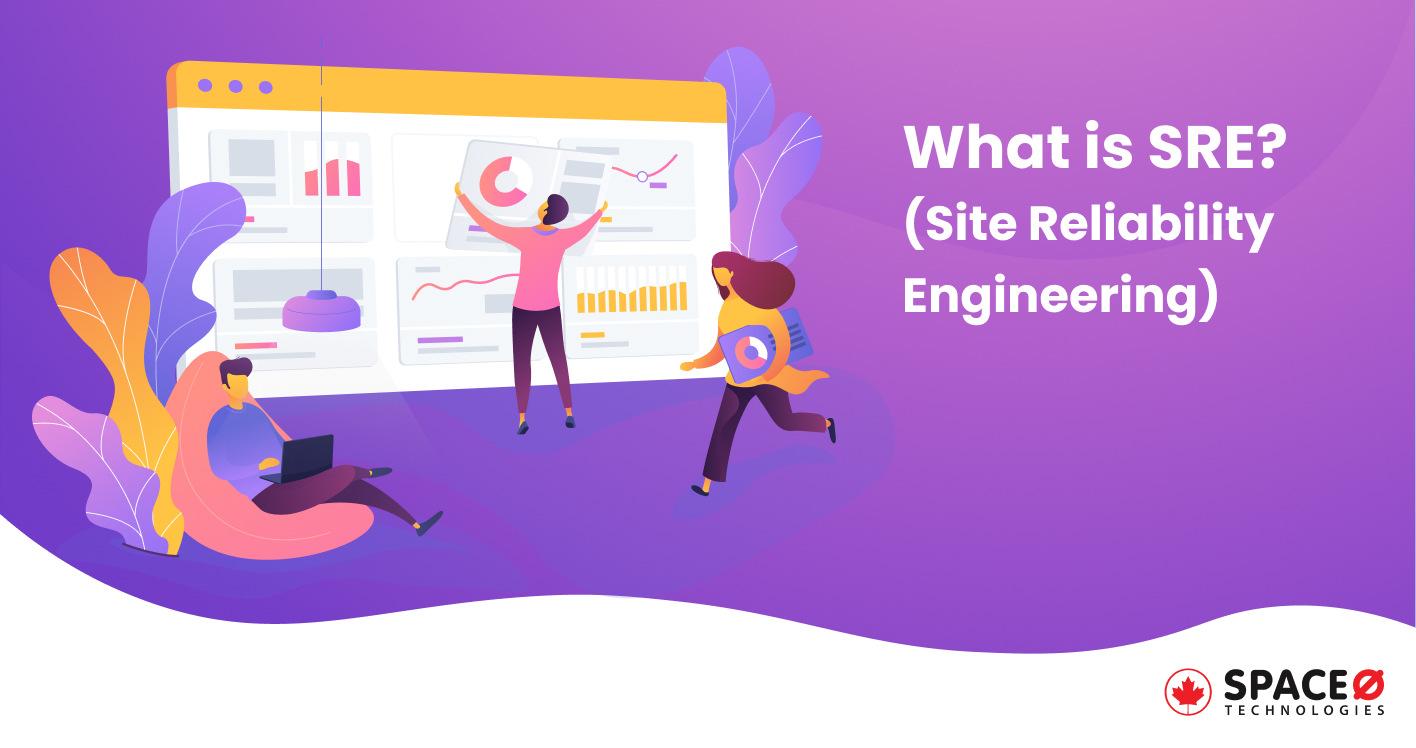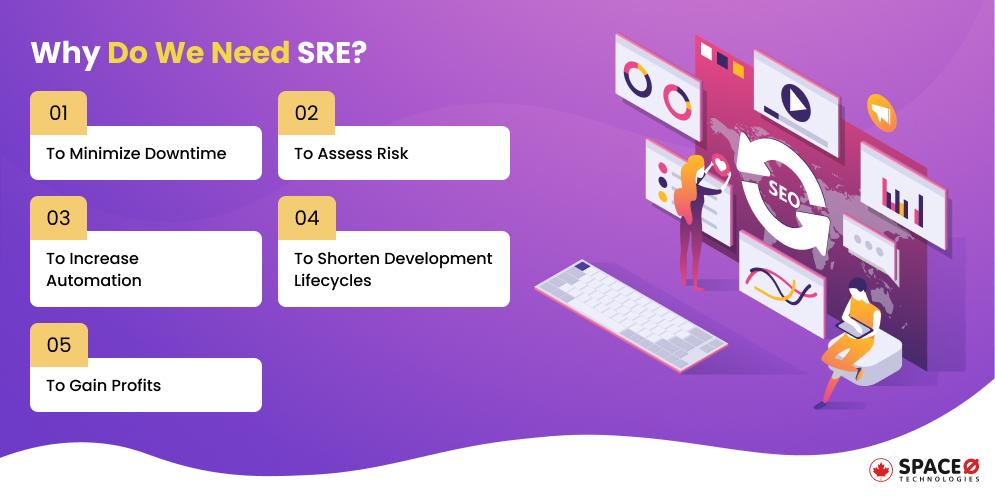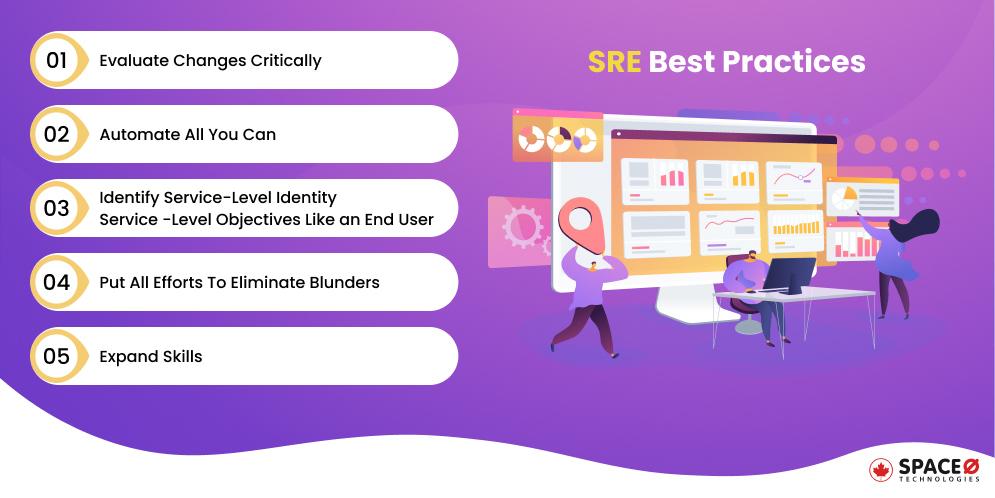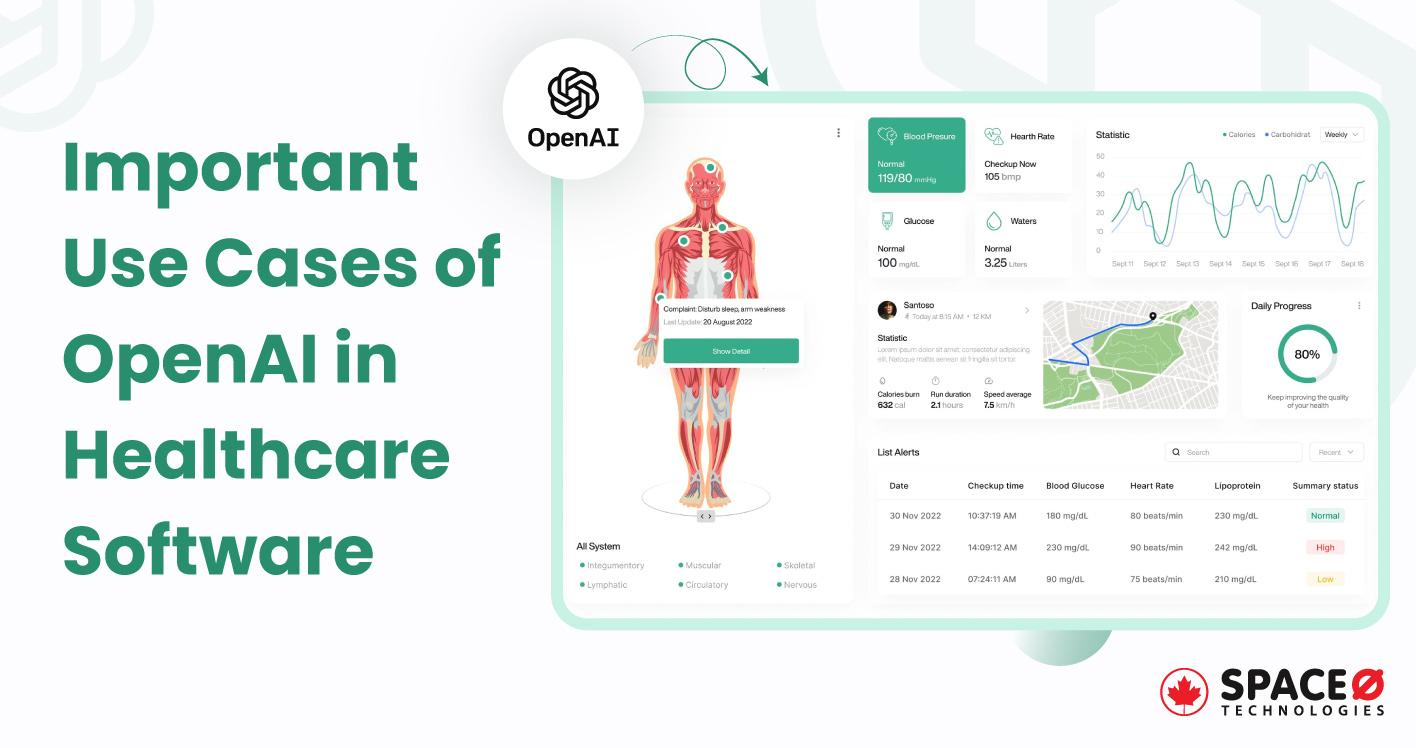
What is SRE (Site Reliability Engineering)? SRE vs DevOps Difference
As the world has moved digitally, reliability is the biggest question of websites, application, and cloud software, but one of the roles which have been around for years, SRE is now proving to be the savior. But what is SRE (Site Reliability Engineering)? SRE is a site reliability engineer, a term given by Google to improve product reliability for IT automation.
However, with trends like DevOps also being more popular, you might be wondering if the site reliability engineering implementation in your business is important or not. So, for your rescue, we have mentioned each bit of SRE for your business. Let’s get started.
Table of Contents
What is SRE (Site Reliability Engineering)?
SRE is a term offered by Benjamin Treynor, which involves creating a connection between the operations team and the software development team. The solution of SRE extends the best possible software engineering attitude to issues of system reliability management.
In other words, site reliability engineering is a discipline that combines aspects of information engineering and applies them to infrastructure and IT operations problems. The key objectives of SRE are to build robust and highly stable information structures in the company.
The History of Site Reliability Engineering (SRE)
In 2003, the originator of the word SRE, Benjamin Treynor, was placed in charge of running a development team size comprised of seven engineers. They had to ensure that websites from Google were usable, secure, and serviceable.
Now, since Benjamin was a software application developer, he tried to act in the same way the SRE may have done and designed & run teams.
- He assigned the development tasks to teams by investing half of his time so they could get a greater understanding of applications.
- He ensured that the software developer has dedicated at least 5% of his work time to fulfilling operating roles as well – this resulted in the “you built it, you run it” slogan. (This is one of DevOps’ pillars now.)
- He connected the development and operations teams and tried to bridge the gap to ensure product performance, operational efficiency, operations problems resolution, and implement new features.
This development team gradually became the present-day site reliability engineering team at Google.
Benjamin explained that the connection between product development and the ops teams was one of the factors to the concept behind reliability software engineering. Because it becomes impossible to accomplish corporate objectives when each team has its own way of doing things.
Since then the site reliability engineering became the model to better navigate the large-scale processes of Google as well as promote the constant implementation of new features.
Planning to create software solutions with SRE?
Let’s get in touch. We have a team of software developers who have experience in developing software for different industries.

Why Do We Need SRE?
The primary reason for reliability engineering is to maintain software stability, but as stated below, there are other important benefits that SREs can bring to the table.

To Minimize Downtime
Site reliability engineers identify the protect uptime and system availability goals by cooperation with engineers, clients, and product owners. To balance development teams and system availability, they use the idea of an error budget (and vice versa). Unlike DevOps, this error budget helps to generate more achievable targets for SRE teams’ deliverables.
To Assess Risk
For any business, a DDoS attack or a cybersecurity breach can be crippling, so the site reliability engineering (SRE) team formulates contingency plans and countermeasures in advance. Also, site reliability engineers are continually looking for operational shortcomings and means of developing configurations. This encourages them to recognize possible challenges sooner and solve those concerns before they damage the processes.
To Increase Automation
The automation of repetitive tasks related to production processes, especially maintenance tasks, is one of the SRE’s key practices. This frees engineers to analyze structures and concentrate on design and process refinement.
To Shorten Development Lifecycles
Site reliability engineers can reduce the overhead of production and help build the products in a quicker and more predictable manner by automating software distribution and establishing CI/CD best practices. This, in turn, helps to shorten the software development lifecycle.
To Gain Profits
When you have to fulfill all the consumer demands at peak season, your business SREs will use idle time and add a dramatically reduced downtime risk, resulting in more sales revenue and profit. In fact, this is one of the approaches of site reliability engineers to meet reliability objectives.
Trouble deciding whether your application should be built with SRE principles or not? We can help.
SRE vs DevOps Difference
| Point of Difference | DevOps | SRE |
|---|---|---|
| Origin | Coined in 2009 by Patrick Debois | Coined in 2003 by Ben Treneyor |
| What it is? | DevOps is a cultural element for the entire dev team | SRE is a role for software professional for creating and maintaining a highly available service |
| Primary focus | Software delivery speed | Product reliability |
| Role | Eliminates the problems between teams | Improves the detection of problems and errors with error budgets |
| Deals with | Pre-failure situation | Post-failure situation |
| Role in SDLC | DevOps is concerned more than 80% with the development process | SRE is concerned with 50% operations workload and 50% engineering site reliability process |
| KPI | Business Metrics | Services Level Objectives |
It seems like SRE and DevOps both are poles apart. But that’s not the case. They also share the same end goals as,
- To make incremental changes quickly and consistently
- To reduce the number of corporate silos
- To have a flexible, open-minded, and adaptable working group
- To automate business processes whenever possible
- To manage quality and improve where necessary
This proves that both DevOps and SREs share the same framework but the site reliability engineer role is deeper into each factor of a framework than DevOps. In the software engineering site reliability team, a software engineer is tasked with operations work and also tasked with what used to be called development. If you want to know more about DevOps we’ve created an in-detailed guide on DevOps Principles, Model, and Methodologies.
5 Site Reliability Engineering Best Practices

Evaluate Changes Critically
Whether it is a short-term change or long-term, SREs must evaluate each change for the risk it carries as if you are the biggest critic. Also, SREs must identify any changes with the awareness of how other programs or procedures can be impacted by the change, considering present and future conditions.
Automate All You Can
Avoid the repeated and time-consuming human labor that waste time. Use the time instead to automate all the repetitive tasks and maintain the speed & accuracy of development. After all, automation is the first thing for SRE developers to look after.
Identify Service-Level Objectives Like an End User
You need to consider what the end-users want to guarantee high-quality service. One way of doing this is to work on describing the service level objective from the end user’s viewpoint. Focus on request latency on the client-side, for example, rather than on the server-side.
Put All Efforts To Eliminate Blunders
The setup is easy when a project starts. You only have a few JSON or INI format files. But as the number of modules increases, it becomes a daunting job to handle the setup and it ends up creating blunders. Even adding simple lines of code to accommodate several languages takes a lot of time. So automate duplicate tasks, analyze frameworks, and put all efforts that release workload in a long term.
Expand Skills
Mostly SRE implementations depend on highly trained and diverse developers. Also, the production environment and activities are complex these days, so even if you have pre-defined skill sets, it will not be enough. You need engineers and developers who are continually expanding their skill sets. Therefore, enable them to continue to develop new ops skills and learn new knowledge.
Looking for expert developers to build your software solutions with SRE practices?
Site Reliability Engineer (SRE) Roles and Responsibilities
By now you would have an idea how much the SRE teams are crucial for an organization to improve as a brand, but how would you compose the SRE team? Here are the key roles and job responsibilities of each role to have ideal SRE teams in your organization. Take a look.
| SRE Team Lead | Responsible for formulating the scope of work for team members and assisting in planning infrastructure architecture and upgrading workflows. |
| System Architect | Responsible for creating an infrastructure that is open, replicable, and flexible to ensure the continuity of services. |
| SRE Infrastructure Engineer | Responsible for solving the existing challenges as well as preparing and executing production systems improvements with 50% development activities and 50% IT operations duties. |
| Release Manager | Responsible for preparing and enforcing, case studies of code releases, code quality, and code rollback strategies. |
| Monitoring System Engineer | The system engineer is responsible for monitoring latency, saturation, code errors (error budget), and traffic – which is also called ‘golden signals.’ |
Key Skills of a Site Reliability Engineer (SRE)
Monitoring and assessing the efficiency of your processes in development is the central aspect of SRE principles. But, of course, it can be varied depending on the situation. So, here are the key skills that you may require as an SRE.
Fundamental Technical SRE Skills
- Understanding of version control
- Expert understanding of Linux OS features
- Strong experience of principles and best practices of DevOps
- Expertise in CI/CD deployment, incident management, and change management
- The experience with troubleshooting software problem
Non-Technical SRE Skills
- Teamwork
- Problems-solving
- Business operations analysis
- Performance under pressure
- Strong written and verbal communication
- Technical language fluency, as SRE experts should be able to present their proposals to project partners of tech companies
Technology Used to Support SRE
Standardization is central to the effective practice of SRE but which tools should be used to standardized SRE roles? Let’s understand it with each stage.
| Planning Stage | Have custom project management tools like |
| Ideation and Creating | Third-party IDEs and Text Editors |
| Verification | Use CI/CD tools like |
| Package & Release Duration | Use container orchestration services like |
| Configuration Stage | |
| Monitoring Stage |
Ready to build large-scale software systems using SRE and DevOps?
Frequently Asked Questions
What is the SRE model?
SRE is what happens when software engineers are asked to perform operational duties. It is an approach to IT operations that uses technology as a platform for process control, bug repair, and industrial automation operations. It affects the customer experience directly.
What does an SRE do?
Site reliability engineers will be entirely committed to designing applications that increase device reliability in construction, solving challenges, responding to accidents, and typically assuming on-call duties.
Who invented SRE?
In 2003, Google invented the word “site reliability engineer,” by Ben Treynor Sloss.
What is the difference between SRE and DevOps?
The key difference between DevOps and SRE is that, instead of the operations unit, reliable engineering is more operationally driven from the top-down, and it is controlled by developers or production teams.
Which is better SRE or DevOps?
SRE focuses mainly on the role of core infrastructure as a system engineer and DevOps is a method used to automate and optimize the production team. So depending on your business requirements, both can be proved as ideal choices.
What is SRE’s role?
The SRE teams are responsible for performance, latency, quality, efficacy, management of improvements, tracking, emergency response, and preparation of capacity.
Conclusion
SRE is a broader context when it comes to application and software development and it has proven to be an effective approach when you are building large enterprise solutions in many case studies. So, if you decide on the SRE model that fits your organization, you can approach a trustworthy technology partner like Space-O, a software development service agency based in Canada. Using DevOps and SRE best practices, we support large-scale applications. For further queries, fill out our contact us form and share your thoughts. Our experts will get back to you shortly!
Editor's Choice

5 Use Cases of Using OpenAI’s API in the Healthcare Industry

Top 10 Best Payment Gateways in Canada for 2025: The Ultimate Guide (2025)

What is Vue.js? Vue.js Advantages And Disadvantages
All our projects are secured by NDA
100% Secure. Zero Spam
*All your data will remain strictly confidential.
Trusted by


Bashar Anabtawi
Canada
“I was mostly happy with the high level of experience and professionalism of the various teams that worked on my project. Not only they clearly understood my exact technical requirements but even suggested better ways in doing them. The Communication tools that were used were excellent and easy. And finally and most importantly, the interaction, follow up and support from the top management was great. Space-O not delivered a high quality product but exceeded my expectations! I would definitely hire them again for future jobs!”

Canada Office
2 County Court Blvd., Suite 400,
Brampton, Ontario L6W 3W8
Phone: +1 (437) 488-7337
Email: sales@spaceo.ca

